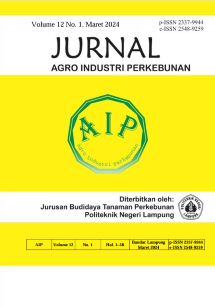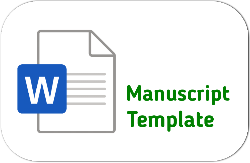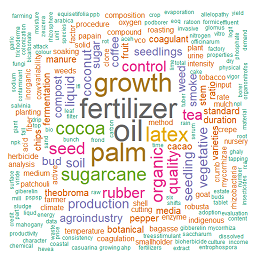Perkembangan Penyakit Busuk Batang pada Kelapa Sawit Pasca Peremajaan Tanaman
DOI:
https://doi.org/10.25181/jaip.v12i1.3272Keywords:
basal stem rot, disease prevalence, disease severity, replanting, trunk residue handlingAbstract
Basal stem rot caused by the fungus Ganoderma boninense is the major threat to oil palm plantations in Indonesia, especially for second generation. Handling oil palm residues during the replanting process greatly determines the fungal attack. This research aims to reveal how handling oil palm trunks affects G. boninense attacks on second generation oil palm plantations. The treatments studied were felled trunk and felled-chipped trunk, each represented by two blocks (five years old of oil palm) with a density of 143 trees/hectare. The results of the study showed that second generation oil palms had a very high prevalence of basal stem rot disease, even though there were differences in the incidence and severity of the disease. Chipping of felled trunk residues can slow the development of the disease. Management of palm residues has a major influence on the onset of this disease in replanted oil palms.Downloads
References
Chong, K. P., Lum, M. S., Foong, C. P., Wong, C. M. V. L., Atong, M., & Rossall, S. (2011). First identification of Ganoderma boninense isolated from Sabah based on PCR and sequence homology. African Journal of Biotechnology, 10(66), 14718-14723.
Corley, R. H. V., & Tinker, P. B. (2015). The Oil Palm. Wiley Blackwell.
Flood, J., Bridge, P. D., & Pilotti, C. A. (2022). Basal stem rot of oil palm revisited. Annals of Applied Biology, 181(2), 160-181. https://doi.org/10.1111/aab.12772
Flood, J., Keenan, L., Wayne, S., & Hasan, Y. (2005). Studies on oil palm trunks as sources of infection in the field. Mycopathologia, 159(1), 101-107.
Hushiarian, R., Yusof, N. A., & Dutse, S. W. (2013). Detection and control of Ganoderma boninense: strategies and perspectives. SpringerPlus, 2, 1-12.
Khoo, Y. W., & Chong, K. P. (2023). Ganoderma boninense: general characteristics of pathogenicity and methods of control. Frontiers in Plant Science, 14, 1156869. https://doi.org/10.3389/fpls.2023.1156869
Merciere, M., Boulord, R., Carasco-Lacombe, C., Klopp, C., Lee, Y. P., Tan, J. S., ... & Camus-Kulandaivelu, L. (2017). About Ganoderma boninense in oil palm plantations of Sumatra and peninsular Malaysia: Ancient population expansion, extensive gene flow and large scale dispersion ability. Fungal Biology, 121(6-7), 529-540. http://dx.doi.org/10.1016/j.funbio.2017.01.001
Midot, F., Lau, S. Y. L., Wong, W. C., Tung, H. J., Yap, M. L., Lo, M. L., ... & Melling, L. (2019). Genetic diversity and demographic history of Ganoderma boninense in oil palm plantations of Sarawak, Malaysia inferred from ITS regions. Microorganisms, 7(10), 464.
Naher, L., Yusuf, U. K., Ismail, A., SoonGuan, T., & Mondal, M. A. (2013). Ecological status of Ganoderma and basal stem rot disease of oil palms (Elaeis guineensis Jacq.). AJCS, 7(11), 1723-1727.
Olaniyi, O. N., & Szulczyk, K. R. (2020). Estimating the economic damage and treatment cost of basal stem rot striking the Malaysian oil palms. Forest Policy and Economics, 116, 102163.
Pahan, I. (2008). Pandungan Lengkap Kelapa Sawit, Manajemen Agribisnis dari Hulu hingga Hilir. Penebar Swadaya.
Paterson, R. M. M. (2020). Depletion of Indonesian oil palm plantations implied from modeling oil palm mortality and Ganoderma boninense rot under future climate. AIMS Environmental Science, 7(5), 366– 379. https://doi.org/10.3934/environsci.2020024
Paterson, R. R. M. (2019). Ganoderma boninense disease of oil palm to significantly reduce production after 2050 in Sumatera if projected climate change occurs. Microorganisms, 7(24), https://doi.org/10.3390/microorganisms7010024
Paterson, R. R. M., Sariah, M., Lima, N. (2013). How will climate change affect oil palm fungal diseases? Crop Protection 113, 113-120. http://dx.doi.org/10.1016/j.cropro.2012.12.023
Petri, H., Hendrawan, D., Bähr, T., Musshoff, O., Wollni, M., Asnawi, R., & Faust, H. (2023). Replanting challenges among Indonesian oil palm smallholders: a narrative review. Environment, Development and Sustainability, 1-17. https://doi.org/10.1007/s10668-023-03527-z
Priwiratama, H., Prasetyo, A. E., & Susanto, A. (2020). Incidence of basal stem rot disease of oil palm in converted planting areas and control treatments. In IOP Conference Series: Earth and Environmental Science (Vol. 468, No. 1, p. 012036). https://doi.org/10.1088/1755-1315/468/1/012036
Rees, R., Flood, J., Hasan, Y., Wills, M. A., & Cooper, R. M. (2012). Ganoderma boninense basidiospores in oil palm plantations: evaluation of their possible role in stem rots of Elaeis guineensis. Plant Pathology, 61, 567–578.
Rees, R. W., Flood, J., Hasan, Y., Potter, U., & Cooper, R. M. (2009). Basal stem rot of oil palm (Elaeis guineensis); mode of root infection and lower stem invasion by Ganoderma boninense. Plant Pathology, 58, 982–989. https://doi.org/10.1111/j.1365-3059.2009.02100.x
Rees, R. W., Flood, J., Hasan, Y., Cooper, R. M. (2007). Effects of inoculum potential, shading and soil temperature on root infection of oil palm seedlings by the basal stem rot pathogen Ganoderma boninense. Plant Pathology, 56, 862–870.
Seman, I. A., Ramli, N. R., Rusli, M. H., Sundram, S., & Kamarudin, N. (2016). Standard Operating Procedures (SOP Guidelines for Managing Ganoderma Disease in Oil Palm. MPOB.
Siddiqui, Y., Surendran, A., Paterson, R. R. M., Ali, A., & Ahmad, K. (2021). Current strategies and perspectives in detection and control of basal stem rot of oil palm. Saudi Journal of Biological Sciences, 28, 2840-2849.
Downloads
Published
How to Cite
Issue
Section
License
Copyright (c) 2024 Paulus Hutagaol, Herry Wirianata, E. Nanik Kristalisasi

This work is licensed under a Creative Commons Attribution-ShareAlike 4.0 International License.
Authors who publish with Jurnal Agro Industri Perkebunan agree to the following terms:
Authors retain copyright and grant the Jurnal Agro Industri Perkebunan right of first publication with the work simultaneously licensed under a Creative Commons Attribution License (CC BY-SA 4.0) that allows others to share (copy and redistribute the material in any medium or format) and adapt (remix, transform, and build upon the material for any purpose, even commercially) with an acknowledgment of the work's authorship and initial publication in Jurnal Agro Industri Perkebunan.
Authors are able to enter into separate, additional contractual arrangements for the non-exclusive distribution of the journal's published version of the work (e.g., post it to an institutional repository or publish it in a book), with an acknowledgment of its initial publication in Jurnal Agro Industri Perkebunan. Authors are permitted and encouraged to post their work online (e.g., in institutional repositories or on their website) prior to and during the submission process, as it can lead to productive exchanges, as well as earlier and greater citation of published work.


























